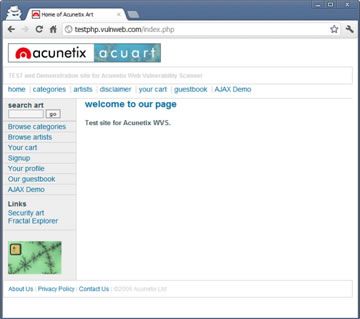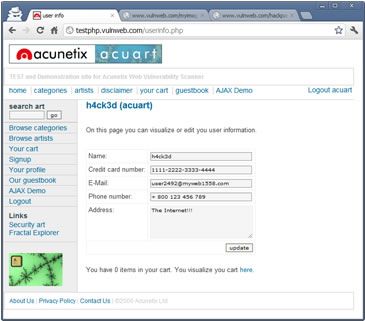Cross-Site Request Forgery, or CSRF for short is a common and regular online attack is. CSRF also goes by the acronym XSRF and the phrase Sea-Surf. CSRF attacks include a malicious exploit of a website in which a user will transmit malicious requests that the target website trusts without the user’s consent. In Cross-Site Scripting (XSS), the attacker exploits the trust a user has for a website, with CSRF on the other hand, the attacker exploits the trust a website has against a user’s browser.
Basically, an attacker will use CSRF to trick a victim into accessing a website or clicking a URL link that contains malicious or unauthorized requests. It is called ‘malicious’ since the CSRF attack will use the identity and privileges of the victim and impersonate them in order to perform any actions desired by the attacker, such as change form submission details, and launch purchases or payments for the attacker or a third-party account.
Upon a request against most websites, browsers will include along any credentials related with the particular website, such as the session cookie of the user, basic authentication credentials, the IP address of the user, etc. Thus, if user’s authentication session is still valid, an attacker can use CSRF to launch any desired requests against the website, without the website being able to distinguish whether the requests are legitimate or not.
A Simple Example of a Cross-Site Request Forgery
As described above, in order for a CSRF attack to be performed, the user must be authenticated with the target website. Assuming the victim is authenticated, the attacker can include a link or script in a third-party website that the victim visits. Thus, when the victim visits that website or link, the rogue script will be executed without the victim being aware of it. For instance, in a chat forum, an attacker posts a message which contains an image tag or an HTML image element. However, the source of the image contains a link which performs an action on a victim’s bank website account. So, instead of an image file the attacker has included a link that performs a bank transaction. Below is an example of the image tag containing a rogue URL.
<img src="http://bank.example.com/withdraw?account=bob&amount=1000000&for=Fred">
The above is a CSRF attack using an HTTP GET request. As we shall see later, a prevention method would allow only HTTP POST requests, in order to prevent the above attack method. However, this can be easily bypassed, since an attacker can use an HTTP POST request to perform a CSRF attack.
CSRF Example Using an HTTP POST Request
In this example the attacker will use an HTTP POST request to realize a CSRF attack. Since the HTTP GET request is not allowed to be used as a prevention measure against a CSRF attack, an attacker can use the HTTP POST request which will perform the CSRF as successfully as the HTTP GET request. It is very difficult for the target website to distinguish between legitimate and rogue HTTP GET or POST requests, since the requests are sent from a “trusted” browser. That means that if no prevention measures are in place, a CSRF attack can be performed transparently without the victim or target website realizing it.
The purpose of the attack, in this example, is to change the profile information of a particular user (victim) on the target website. The target website for this example will be http://testphp.vulnweb.com/.
The victim has an account on testphp.vulnweb.com which includes personal information as seen below.
The attacker uses CSRF to change the information on the victim’s profile. This, as mentioned earlier, requires the victim to be authenticated with the target website. A user can update the profile information by using the given form in the ‘Your profile’ page. The code of the particular form is shown below.
(http://testphp.vulnweb.com/userinfo.php)
<form name="form1" method="post" action="">
<table border="0" cellspacing="1" cellpadding="4">
<tr>
<td valign="top">Name:</td><td><input type="text" value="James Markus" name="urname" style="width:200px"></td>
</tr>
<tr><td valign="top">Credit card number:</td><td><input type="text" value="1254-5498-5233-5569" name="ucc" style="width:200px"></td>
</tr>
<tr><td valign="top">E-Mail:</td><td><input type="text" value="[email protected]" name="uemail" style="width:200px"></td>
</tr>
<tr><td valign="top">Phone number:</td><td><input type="text" value="+459 963 87774 996" name="uphone" style="width:200px"></td>
</tr>
<tr><td valign="top">Address:</td><td><textarea wrap="soft" name="uaddress" rows="5" style="width:200px">North London, London, England</textarea></td>
</tr>
<tr><td colspan="2" align="right"><input type="submit" value="update" name="update"></td></tr>
</table>
</form>
From the above code we can identify the input fields which will receive information from a user and send to the website. These are called “urname”, “ucc”, uemail”, “uphone” and “uaddress” and are shown below:
<input type="text" value="James Markus" name="urname" style="width:200px">
<input type="text" value="1254-5498-5233-5569" name="ucc" style="width:200px">
<input type="text" value="[email protected]" name="uemail" style="width:200px">
<input type="text" value="+459 963 87774 996" name="uphone" style="width:200px">
<textarea wrap="soft" name="uaddress" rows="5" style="width:200px">North London, London, England</textarea>
When the user clicks the ‘Update’ button of the form userinfo.php, an HTTP POST request will be sent that will contain the above parameters along with their values accordingly.
Since the website does not have any prevention measures against CSRF, the attacker can use this form (http://testphp.vulnweb.com/userinfo.php) to submit any desired information without the user’s consent. The attacker will perform this by embedding the actual code of the update form in his own website and when the victim visits the attacker’s website, the form, including any desired information of the attacker, will be submitted to the target website.
This is the malicious website of the attacker.
The attacker’s website is a normal online photo gallery website. However, it contains a hidden form which will auto submit and update the victim’s profile on testphp.vulnweb.com.
The hidden iframe exists in the myimages.php page.
<iframe src="http://www.vulnweb.com/updateif.php" style="display:none"></iframe>
This loads another page of the attacker’s website. The website contains the actual userinfo.php page code which auto submits and updates the particular userinfo.php of the current victim. This happens automatically every time a user accesses this website.
The updateif.php page contains the actual form code which auto submits the desired information the attacker has set.
<body onload="document.getElementById('f').submit()">
<form id="f" action="http://testphp.vulnweb.com/userinfo.php" method="post" name="form1">
<input name="urname" value="attacker’svalue">
<input name="ucc" value=" attacker’svalue">
<input name="uemail" value=" attacker’svalue">
<input name="uphone" value=" attacker’svalue">
<textarea name="uaddress" wrap="soft"><attacker’svalue></textarea>
<input name="update" value="update">
</form>
</body>
This form retrieves the value information from a text file. When the updateif.php is called, the information (set earlier) by the attacker is retrieved and placed in the “value” fields. Then the form is auto submitted and the target page is loaded. These operations are performed inside a hidden iframe, thus the victim will not see the target website.
The attacker has an admin page - www.vulnweb.com/hackpanel - from where he can set the values to be submitted on the target website.
The admin hack panel is a control page where the attacker can set the information that will be submitted to the target website when the CSRF attack is realized.
From this website, the attacker can set new information. (Note: For the purposes of this example, there is a reset button which will reset the values of the target website) This information is stored in a file, from which the updateif.php (seen earlier) will load and submit the attacker’s value.
So, as we mentioned earlier, in order for the attacker to perform a CSRF attack and his information to be submitted, the main requirement is for the victim to be logged into the target website. When the victim visits the attackers’ website, the hidden iframe will load the code of the update profile form found in the userinfo.php (target’s update profile form) with the attacker’s desired information and auto submit them to the target website. This operation is the exact operation the victim could perform to update his profile. However, due to the CSRF vulnerability a third party entity such as an attacker can use this operation to submit malicious information without the user being able to know about it.
The attacker sets the desired information in the http://www.vulnweb.com/hackpanel/ page and clicks ‘Update’. The information is stored in the file.
The attacker’s information is ready to be loaded when the attacker’s website is visited.
When the victim visits the attacker’s website at www.vulnweb.com/index.php, nothing will happen since there is not any malicious code in the ‘Home’ page. The victim needs to access the www.vulnweb.com/myimages.php page where the malicious code exists, and the attacker’s information will be submitted to the target website (testphp.vulnweb.com/).
As soon as the victim visits the myimages.php page, the hidden iframe is loaded executing the CSRF attack. Below is the HTTP POST request which is made when the victim accesses the attacker’s malicious /myimages.php page.
Host: testphp.vulnweb.com
Connection: keep-alive
Content-Length: 140
Cache-Control: max-age=0
Origin: http://www.vulnweb.com
User-Agent: Mozilla/5.0 (Windows NT 6.1; WOW64) AppleWebKit/536.5 (KHTML, like Gecko) Chrome/19.0.1084.56 Safari/536.5
Content-Type: application/x-www-form-urlencoded
Accept: text/html,application/xhtml+xml,application/xml;q=0.9,*/*;q=0.8
Referer: http://www.vulnweb.com/updateif.php
Accept-Encoding: gzip,deflate,sdch
Accept-Language: en-GB,en-US;q=0.8,en;q=0.6
Accept-Charset: ISO-8859-1,utf-8;q=0.7,*;q=0.3
Cookie: login=acuart%2Facuart
urname=h4xor&ucc=1111-2222-3333-4444&uemail=spam%40myspam.com&uphone=%2B800+666+666+666&uaddress=Hacking+the+universe%21%21%21&update=update
The above HTTP POST request shows that the Host to which the POST request is sent is testphp.vulnweb.com but the origin is www.vulnweb.com with a referrer being the updateif.php page of the attackers website. Moreover, the Cookie information is included in the POST request which is the first requirement in order for the POST request to be authenticated and the CSRF to be realized. Finally, the parameters information is included in the POST request and will be submitted to the target website.
When the POST request is made the browser already has the authentication session for the target website and it includes the authentication details in the POST request as it should do in any other legitimate POST request made by the victim. This particular rogue POST request is exactly the same as a legitimate POST request with the same Host target but from a different origin. The browser, as normal, sends the POST request and the server (in this case) is not able to differentiate between a legitimate and rogue POST request since both are performed by the trusted browser in the same way.
There is not any information included in the POST request (such as a token value, seen later) which will help the server to validate a POST request as not malicious. This results in the server processing both POST requests in the normal way.
From the above image you can notice that the profile information of the victim on the target website has been changed.
The rogue information was submitted and successfully updated the victim’s profile on the target website. The victim has no indication of what happened since this operation is transparent to the user. The attacker has completed his attack successfully in this scenario. In another scenario an attacker could change the admin passwords, perform illegal transactions, and more.
NOTE: The particular operation will be performed for any user that accesses the attacker’s website. In case the particular user has an account in the target website and is logged in, then his profile information will be updated with the ones of the attacker. For this particular example, we assumed that there were no security measures in place that might block the CSRF attack such as NoScript.
Prevention Measures
There are many suggested prevention measures that can be implemented to mitigate CSRF attacks. Some of them, though, are not complete solutions and leave room for the attack to still work. For example:
- The use of a secret cookie - This method will not work because all cookies related to the target website will be submitted as usual as in a normal (legitimate) HTTP request.
- Accept POST requests only - This suggestion falls short because attackers can deceive an end-user to submit a forged POST request unknowingly using social engineering methods.
- URL Rewriting – An incomplete solution since some session information is included or exposed in the URL.
Let’s take a look at some measures that do actually mitigate a CSRF attack.
Use of Tokens
A prevention measure could be the implementation and inclusion of tokens in a user’s (current) session. Tokens are long cryptographic values that are difficult to guess. These will be generated when a user’s session begins and will be associated with this particular user’s session. This challenge token will be included in each request, which will be used by the server side to verify the legitimacy of the end-user’s request.
In order for an attacker to forge a HTTP request, they would have to know the particular challenge value (token) of the victim’s session.The disclosure of the challenge token in the URL (GET requests) should be done wisely and with awareness of the CSRF attack.
Challenge tokens can be used in the ViewState option of the ASP.NET. Since it is possible for an attacker to obtain or guess the parameter values of a ViewState then the inclusion and use of a token can make the ViewState unique and protected to CSRF attacks.
Moreover, tokens can be used in the submission of double cookies. The server-side will generate a strong random value which will be included in the submitted cookie on the user’s machine. This will act as the session ID. On sending a POST request, the website will require the particular session ID to be included as a hidden value in the submission form and be included in the cookie as well. If the two values are the same, the POST request will be considered as valid and submitted successfully. Therefore, even if the attacker is able to include any value in the form, based on the same-origin policy, the attacker will not be able to retrieve or modify the token value in the cookie and launch a CSRF attack unless they manage to guess the session ID value.
Other Security Measures
Another prevention measure is the use of challenge-response options. Despite the fact that this measure affects the user experience, it can strongly defend against CSRF attacks.
Furthermore, users should be made aware of potential threats. For example, users should:
- Log out from web applications when they have finished using them.
- Use the web browser with safety - that means making sure not to save any login credentials on the web browser and using legitimate and secure browser extensions.
Finally, you should scan your website using a web vulnerability scanner to detect any Cross-Site Request Forgery vulnerabilities so you can fix them before they cause any issues.






